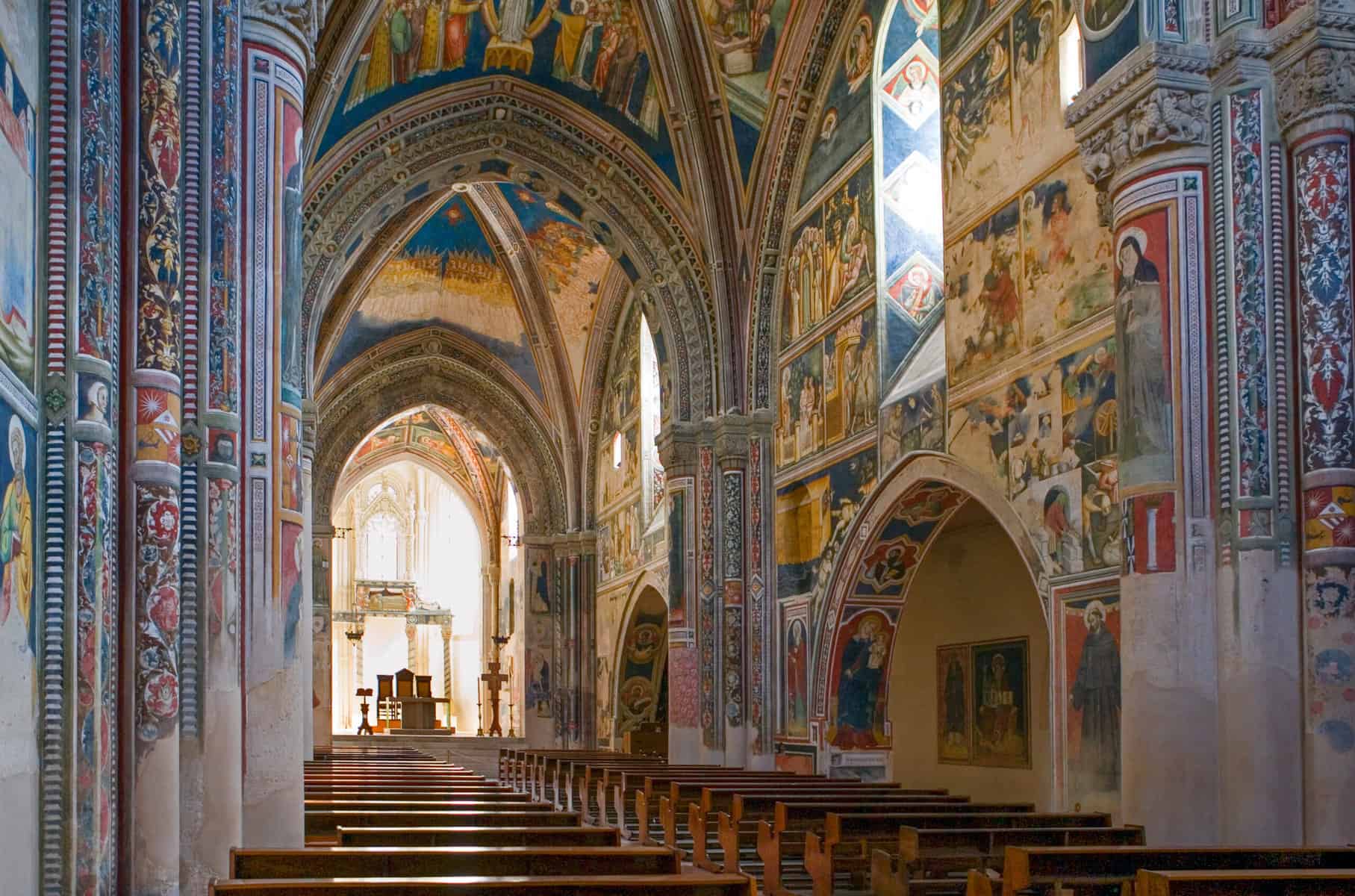Lecce, Italy; The Definitive Luxury Guide
January 2024
Looking for an authentic, less-traveled destination in Italy that’s lighter on crowds and rich with history, culture, and unique Southern Italian experiences?
Have a look at Lecce Italy.
Tucked just above the “boot” of Southern Italy in the Puglia region, just inland from the Adriatic Sea, the ancient city of Lecce is one of Southern Italy’s best kept secrets.
Our time spent in Lecce made us really appreciated all the best elements of Southern Italian life. It’s truly a place to escape the modern world, making it one of our favorite destinations to escape to Italy.
If this has piqued your interest – and we think it should – here’s our definitive guide to Lecce Italy.
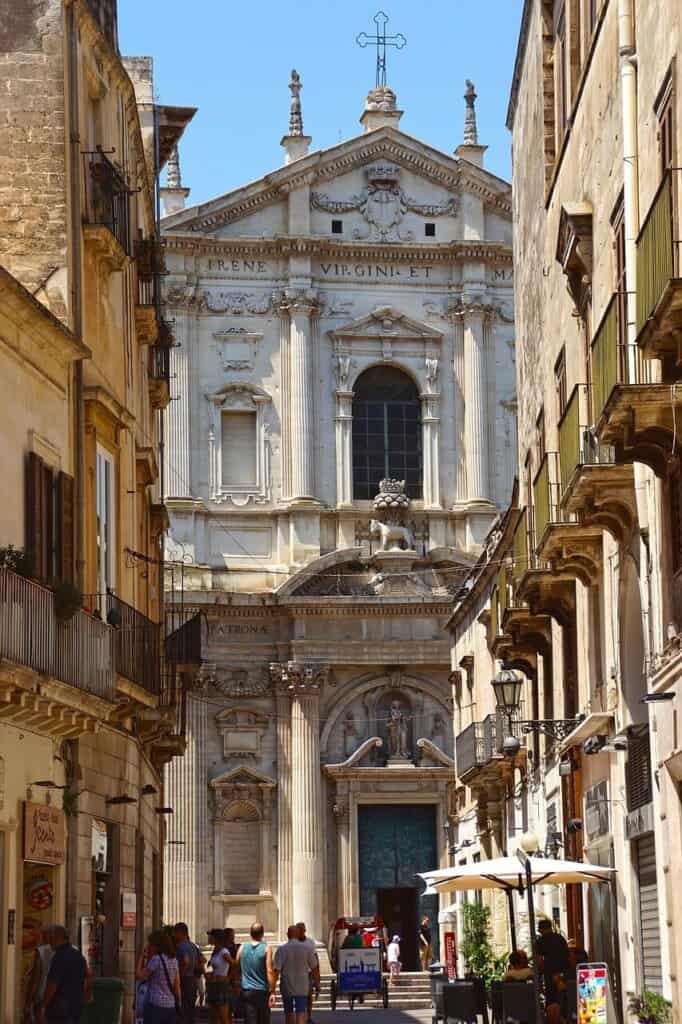
Table of Contents
Is Lecce Worth Visiting?
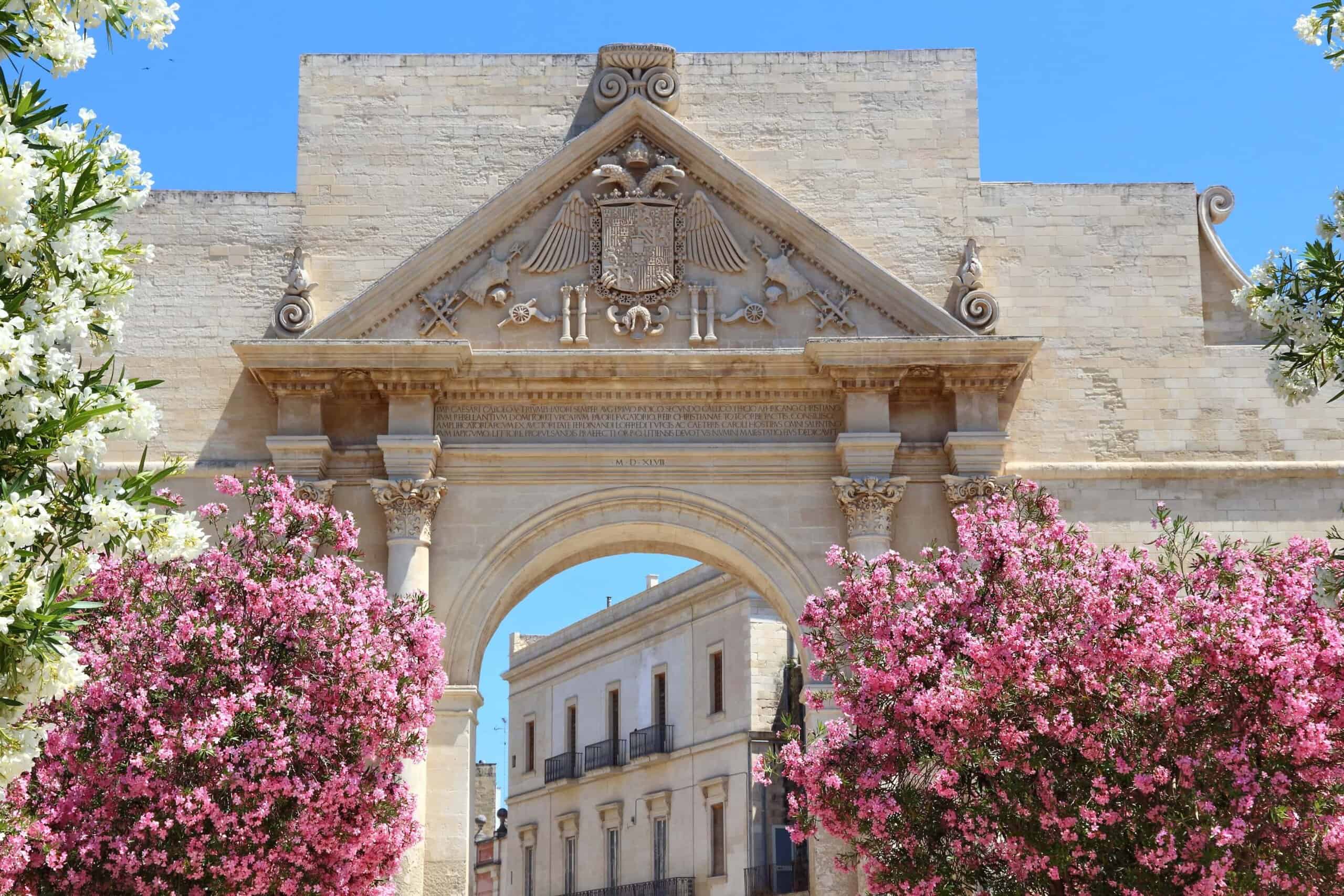
Lecce is most definitely a destination worth visiting. The city is a true find for in-the-know luxury travelers in search of authentic Italian experiences.
Lecce is known as “The Florence of the South”, and for good reason. History, architecture, cuisine, and many charming luxury accommodations make Lecce one of our go-to destinations in Puglia
Add in world-class golf, pristine beaches, bespoke artisan shops and friendly locals, and you’ve got Lecce, a top destination for luxury travelers searching for authentic Italy.
Lecce also meets a key criteria for many of our favorite destinations: it’s cinematic. The city literally “glows” (more on that later), but don’t take our word for it, see for yourself in this video we produced while touring one of our top luxe-less-known destinations.
Lecce Fact Sheet
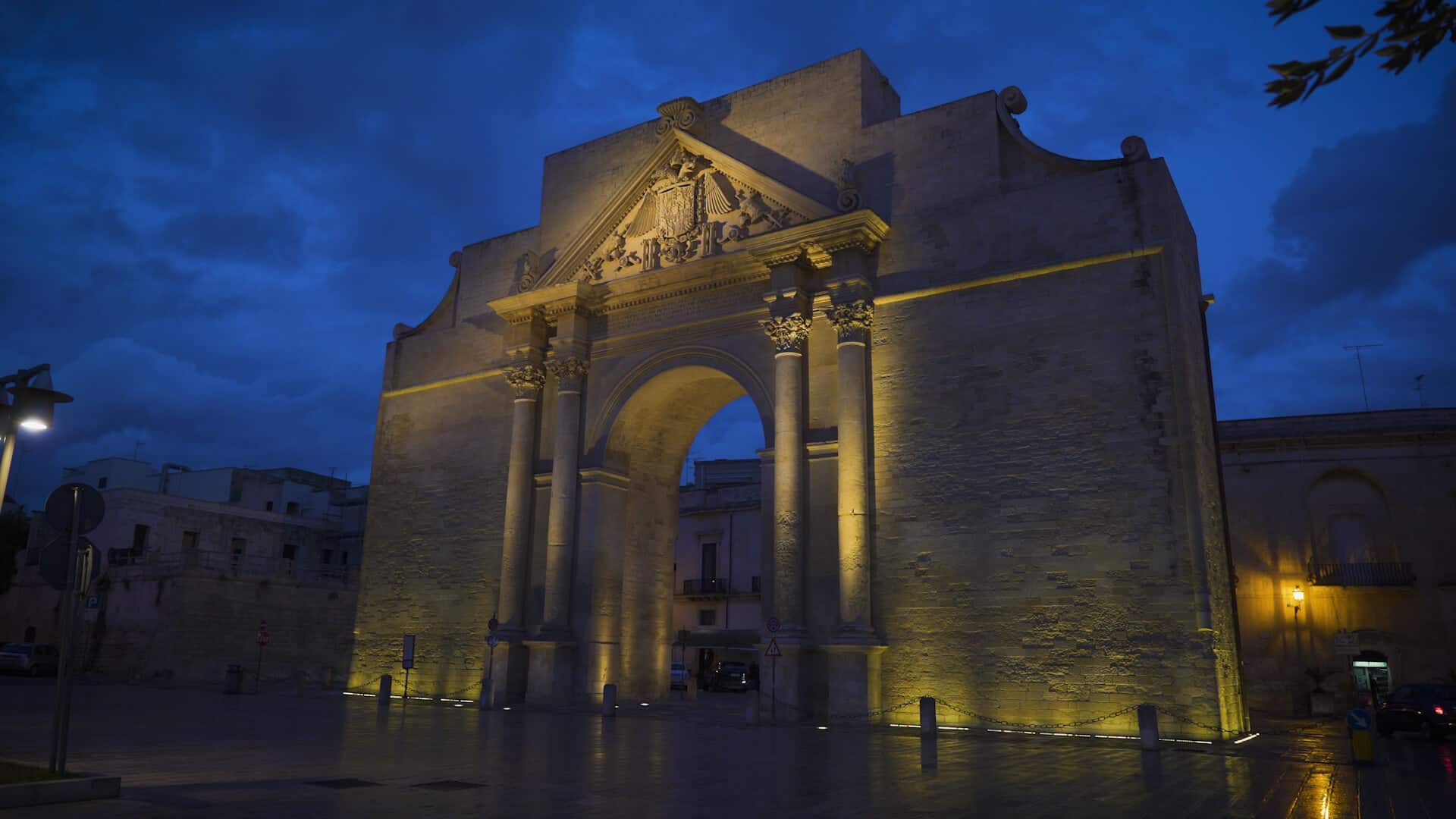
Geography:
● Lecce, which in Italian translates to “walled city”, is located in the Puglia (also known as the Apulian) region of Southern Italy, on the Salento Peninsula.
● With a population of approximately 96,000 people, the city is surrounded by olive groves, vineyards, and beaches on the Adriatic Sea.
Climate:
● Lecce has a Mediterranean climate, with hot, dry summers and mild, wet winters.
● The average temperature in Lecce in July is around 27 degrees Celsius (81 degrees Fahrenheit), and the average temperature in January is around 9 degrees Celsius (48 degrees Fahrenheit).
Best Time to Visit:
● Shoulder seasons in spring (April – June) and fall (Sept. – Nov.) provide pleasant weather with fewer crowds.
● The peak season in Lecce is during the summer months, from June to August. During this time, its more crowded (but not Venice-in-summer crowded) and the weather is most definitely hot, sunny, and dry.
Getting There:
● Lecce does not have its own airport, so the closest airports are in Brindisi and Bari. You can fly to either of these airports and then take a train or taxi to Lecce.
● The train journey from Brindisi takes about 30 minutes and the train journey from Bari takes about 1.5 hours.
Getting Around:
● Once in Lecce, you will discover that it is a modestly sized city and it is easy to navigate on foot.
● Bicycles and scooters are readily available for rental and are an excellent way to explore the city and the surrounding area, including the countryside.
● Keep in mind that many of the streets are cobblestoned and uneven, so comfortable shoes, as is often the case, are a good idea.
For more detailed information on visiting Lecce, visit the official tourism site at: Visit Lecce
What’s the History of Lecce?
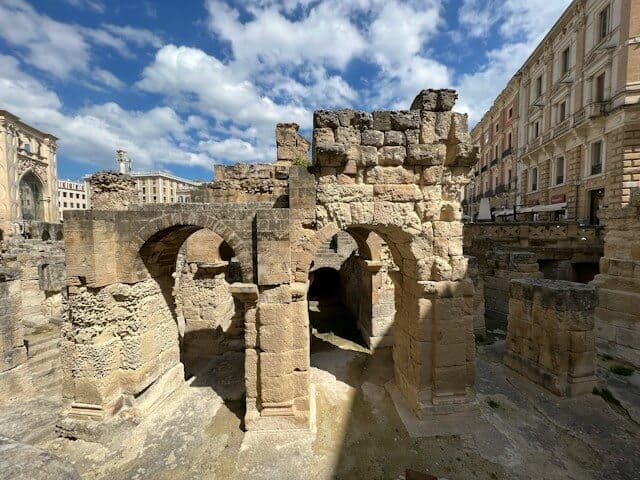
Lecce’s history is rich and varied, with a wide range of cultural influences.
Origins
The origins of the city date back over 200 years to the 5th century BC. The city was founded by the Messapians, an ancient Italic people. Early Greeks also inhabited the region, and to this day Grecian influence is still prevalent in the city, which is sometimes referred to as “Magna Grecia”.
In the 3rd century BC, Lecce was conquered by the Romans and became part of the Roman Empire. During this time, the city flourished and became an important center of trade and culture.
After the fall of the Western Roman Empire, Lecce was ruled by a succession of different powers, including the Ostrogoths, Byzantines, Saracens, and Lombards.
Middle Ages
In the 11th century, the city was conquered by the Normans and became part of the Kingdom of Sicily. Under Norman rule, Lecce experienced a period of economic and cultural prosperity.
In the 13th century, Lecce was conquered by the Hohenstaufen dynasty. The Hohenstaufen emperors were patrons of the arts and sciences, and under their rule, Lecce became a center of Renaissance culture.
Many of the city’s most beautiful buildings, including the Basilica di Santa Croce and the Palazzo del Celestini, were built during this time.
In the 16th century, Lecce was conquered by the Spanish Empire. The Spanish ruled Lecce for over 300 years, and during this time, the city continued to flourish.
Many of Lecce’s most famous Baroque buildings, such as the Cathedral of lecce and the Palazzo Vescovile, were built during this time.
Modern Age
In the 19th century, Lecce became part of the newly unified Kingdom of Italy. The city continued to grow and develop throughout the 20th century, and today it is a thriving center of commerce and culture.
Visitors to modern Lecce will notice that it is a city that literally “glows”, thanks largely to the prominent usage of Lecce Stone, a soft golden-toned easily malleable limestone that has been used as a building material throughout the city for centuries.
Unsurprisingly, Lecce Stone is also the city’s main export.
Olive oil is another key export of Lecce. An astounding 68% of all Italian olive oil is produced in Puglia, and Lecce and its many olive groves make an important contribution to this effort.
In addition to flour and wine, Lecce is well-known for another rather unique export; papier-mâché.
Lecce’s artisans became well-known for crafting lightweight religious sculptures from this malleable material. Many local artisans still work in this medium, so be sure and leave room when packing for one-of-a-kind souvenirs.
What Are the Best Things To Do in Lecce?
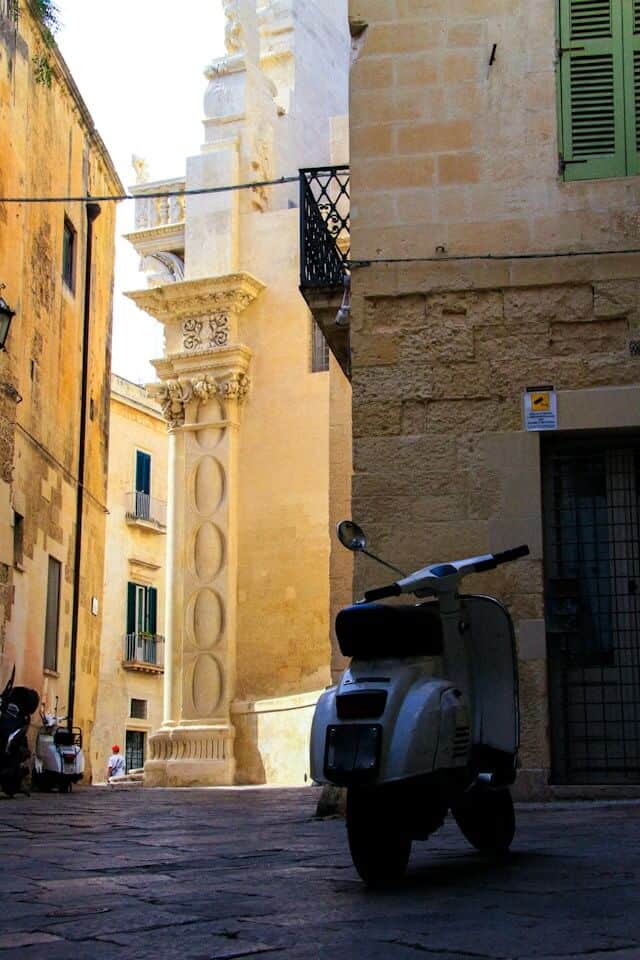
For a relatively small city, Lecce has a lot to offer. Below is our list of the top eight sites to see in Lecce.
1. Visit the Piazza del Duomo
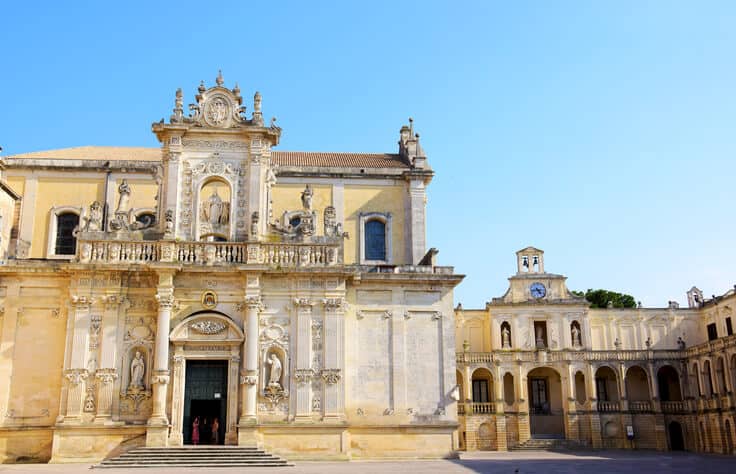
The Piazza del Duomo is the main square in Lecce.
The Piazza is comprised of the Lecce Cathedral, one of the city’s most iconic landmarks,The Bishop’s Palace, and the Seminary.
Visitors to Lecce interested in art and history will want to leave ample time to explore this charming and fascinating piazza.
On our visit to Lecce during shoulder season, on a quiet Sunday, we had this Piazza all to ourselves, and it was unquestionably a magical experience.
Here’s a breakdown of the three main buildings that comprise the Piazza del Duomo, which is accessed by a rather unassuming narrow alley that opens onto the spacious open plaza.
Lecce Cathedral
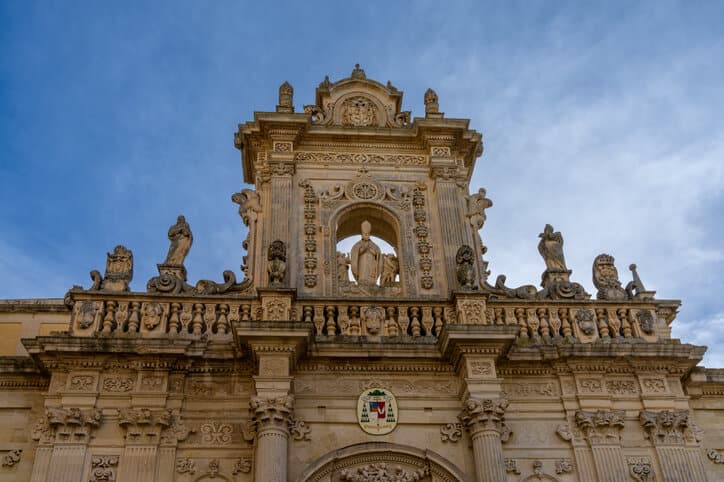
At the center of the Piazza sits The Lecce Cathedral, or Duomo di Maria Santissima Assunta (the Cathedral of Our Lady of the Assumption). The cathedral is a stunning example of Baroque architecture and it is a must-see for any visitor to Lecce.
Constructed in 1230, the cathedral evolved its originally traditional style over centuries, culminating with its redmodel in 1659 by architect Guiseppe Zimbalo.
The Campanile del Duomo, or Cathedral Bell Tower, was constructed in 1661, the tower rises 230 above the piazza. Visitors are able to pass through its impressive doors and visit to top of the tower to enjoy views that on a clear day stretch to the Adriatic Sea.

Bishop’s Palace
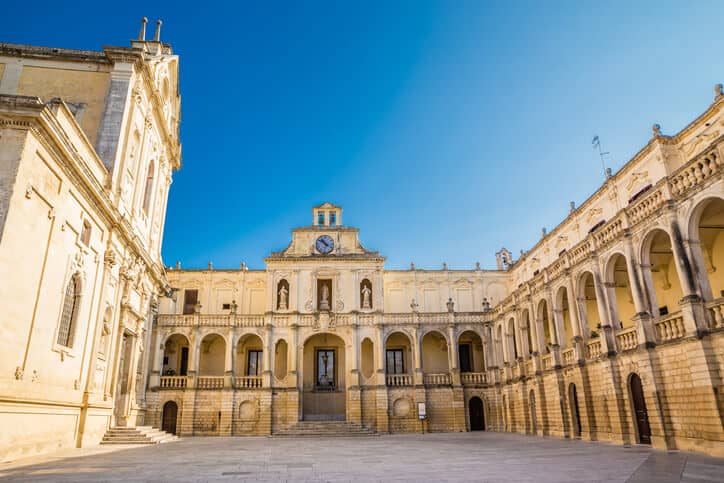
On one side of the cathedral sits the Bishop’s palace, a monument to the church’s power and influence over Italian life.
The exterior dates to 1758, boasting multiple arches and an impressive clock installed in 1764 by architect Domenic Panico.
The Palace of the Seminary

The Palazzo del Seminario comprises the opposite flank of the cathedral. Constructed during the 17th century, the palace features an elaborate façade adorned with intricate stonework, ornate balconies, and a central portal. As the name indicates, it was originally built to serve as a seminary, providing education and accommodation for aspiring clergy members.
Today, it serves as the Lecce Provincial Administration headquarters.
The palace boasts an impressive central courtyard adorned with statues and fountains, offering a peaceful and elegant ambiance. The ornate salons and chambers inside the building feature intricate frescoes, finely crafted stucco work, and beautifully decorated ceilings, all reflecting the opulence of the Baroque period.
Notably, the palace is also home to the Lecce Provincial Art Museum, which houses an extensive collection of artwork, historical artifacts, and religious objects.
2. Visit the Basilica di Santa Croce
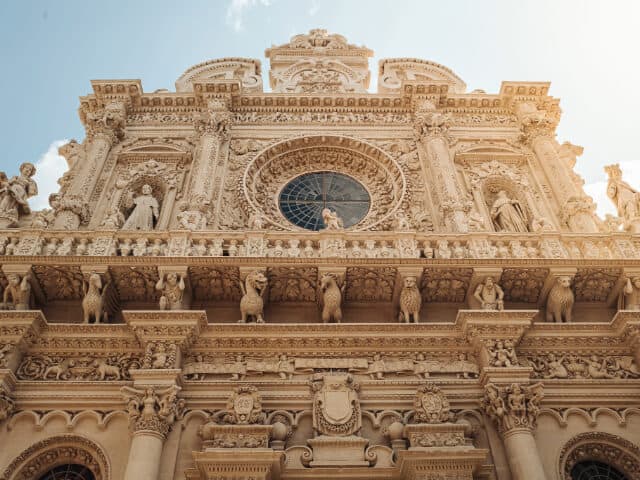
A visit to the Basilica di Santa Croce is a must on any visit to Lecce. This Baroque church is known for its elaborate facade and its intricate and ornate interior decoration.
Constructed between 1549 and 1695, the church took almost 150 years for artisans and architects to complete, due to the complexity of its design. As a result of their persistence and vision, visitors today can experience the intricate and passionate work of many generations of talented professionals.
Boasting seventeen baroque altars and seven side chapels, with its gilded ceiling and ornate stone columns the interior of the Basilica is an almost overwhelming feast for the eyes.
3. Explore the Centro Storico
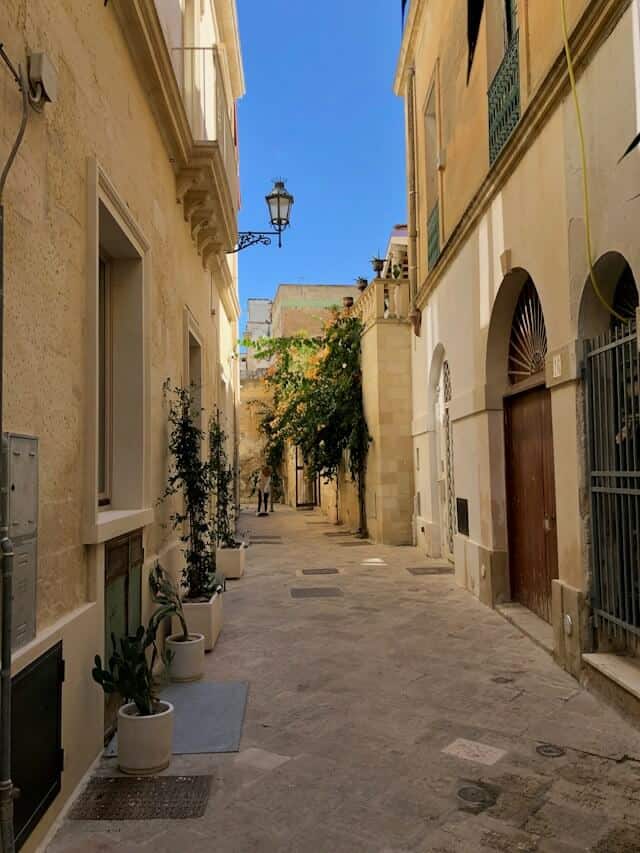
The Centro Storico is the historic center of Lecce and it is home to many of the city’s most beautiful buildings, churches, and piazzas. There are a multitude of walking tours, which offer the opportunity to take a deep dive into Lecce’s storied history. The narrow streets and alleyways are excellent opportunities to explore the city and discover its many artisans.
Note that both the Centro Storico and Piazza del Duomo host many cultural activities throughout the year.
For the most up-to-date calendar, check the official Visit Lecce site here while planning your trip:
4. Visit the Roman Amphitheater
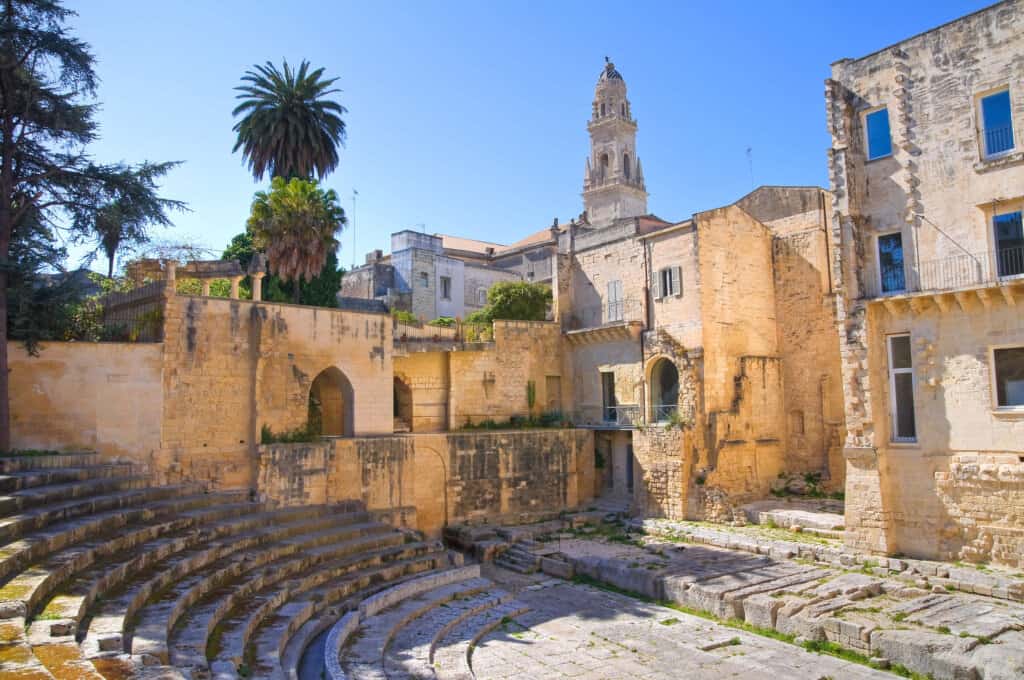
The Roman Theater in Lecce, Italy, is a remarkable archaeological site that offers a captivating glimpse into the city’s ancient history.
Built during the Roman Empire, likely in the 1st century BC, the theater once served as a venue for various performances and gatherings.
Today, visitors can explore the well-preserved remains of the theater, including its semicircular seating area, stage, and architectural details.
This historical site stands as a testament to the enduring influence of Roman culture in Lecce and provides a fascinating window into the past for those interested in ancient architecture and history.
5. Visit Museo Faggiano
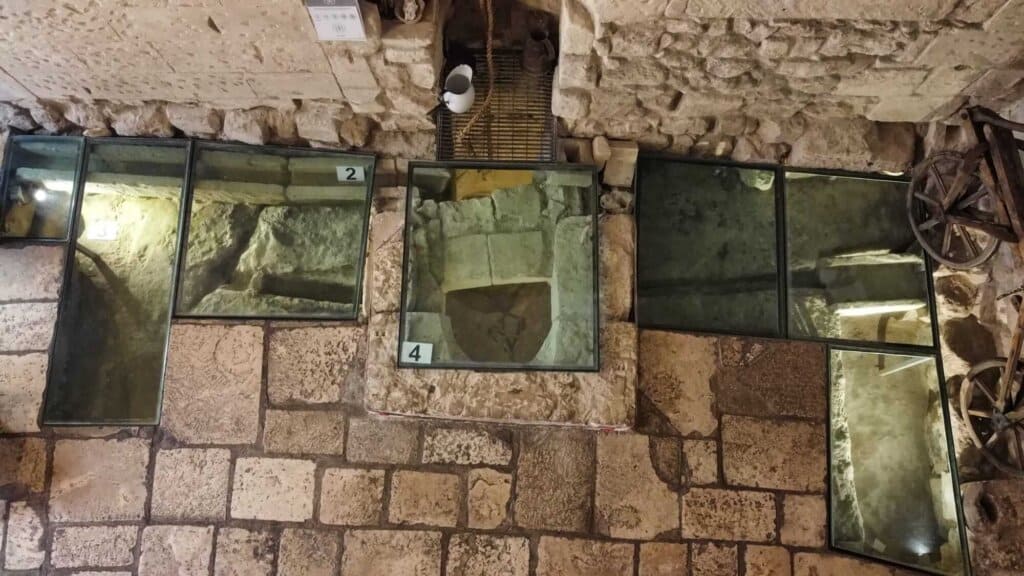
One of Italy’s most unusual museums, the Museo Faggiano has a unique and unexpected history that began in 2001.
The museum’s story revolves around the Faggiano family, who owned and inhabited a 17th-century palace in the heart of Lecce. The family decided to undertake renovation work on their property, with the goal of turning the home into a trattoria.
As the renovations began, the workers made an astonishing discovery. They found a hidden underground world beneath the palace that had remained concealed for 2500 years.
This underground complex, initially unknown even to the Faggiano family, turned out to be a treasure trove of historical artifacts and architectural remnants spanning various time periods. It included chambers, Roman-era artifacts, a grain storage facility, a Jewish ritual bath, a Fraciscan chapel, etchings from the Knights Templar, and a series of hidden escape hatches.
Recognizing the significance of the discovery, the Faggiano family decided to preserve and share this extraordinary archaeological find with the public.
They transformed their family home into the Museo Faggiano, a museum that not only showcases the historical layers of Lecce but also provides a fascinating look at the unexpected surprises hidden beneath the surface of a seemingly ordinary building.
6. Visit the Castello Carlo V
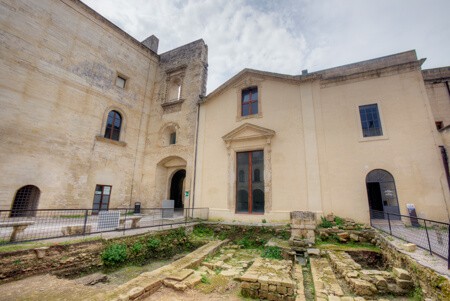
The Castello Carlo V is a historically significant fortress that stands as a remarkable testament to the Lecce’’s rich past. Built during the 16th century, this fortress was commissioned by the Holy Roman Emperor Charles V to fortify Lecce against the threat of Ottoman invasions.
The castle’s design is a prime example of military architecture from the Renaissance period, featuring a massive moat and imposing stone walls.
Over the centuries, the Castello Carlo V has played various roles, from a defensive stronghold to a prison and, later, a cultural and exhibition center. Today, it houses a range of exhibitions and cultural events, making it a historical gem and a hub of cultural activities in Lecce.Lecce’s history.
7. Visit the Museo Provinciale Sigismondo Castromediano
The Museo Provinciale Sigismondo Castromediano offers a captivating glimpse into the region’s art and history.
Housed in the historic Palazzo Taurino, the museum is named after Sigismondo Castromediano, a notable figure in Lecce’s cultural and political history. The museum’s collection includes a diverse range of artifacts, from archaeological finds and artworks to historical documents and sculptures, providing a comprehensive view of the cultural heritage of the Lecce province.
The museum’s collection also includes a wide collection of medieval sculptures and Renaissance paintings.
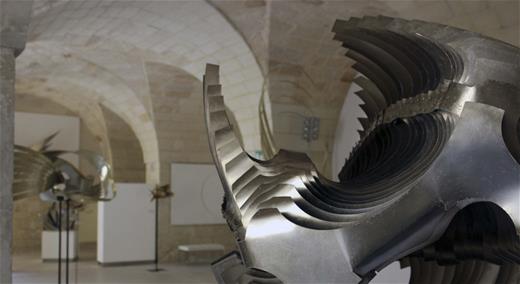
Museo Provinciale Sigismondo Castromediano
8. Visit the Museo Ebraico, the Jewish Museum
In the Middle Ages, Lecce was home to one of Italy’s most thriving Jewish communities. The Museo Ebraico captures this lost culture in all its glory.
With many artifacts and exhibits, the museum brings to life Jewish life in Southern Italy in medieval times. Interactive exhibits and guided tours enhance the experience and immerse guests in an important part of the city’s past.
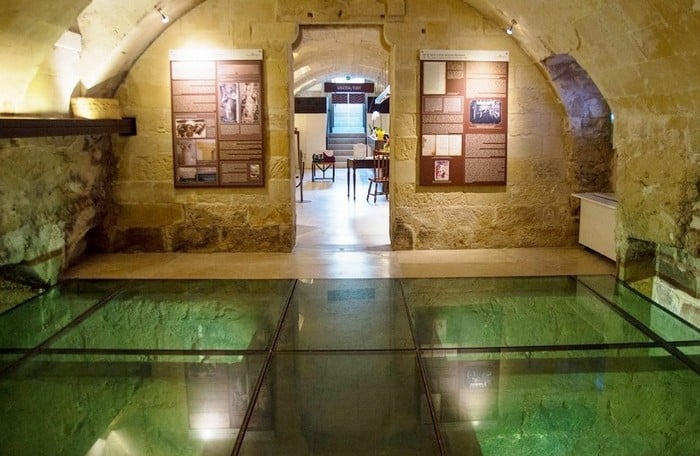
Museo Ebraico, the Jewish Museum
What Are the Best Restaurants in Lecce?
Lecce is an excellent destination to explore Southern Italian cuisine, which is lighter and more seafood-oriented than Central and Northern Italian Cuisine.
Below is our list of recommended restaurants in Lecce:
La Cucina Di Mamma Elvira

Address: Via S. Trinchese 7, Lecce
L’Altro Baffo
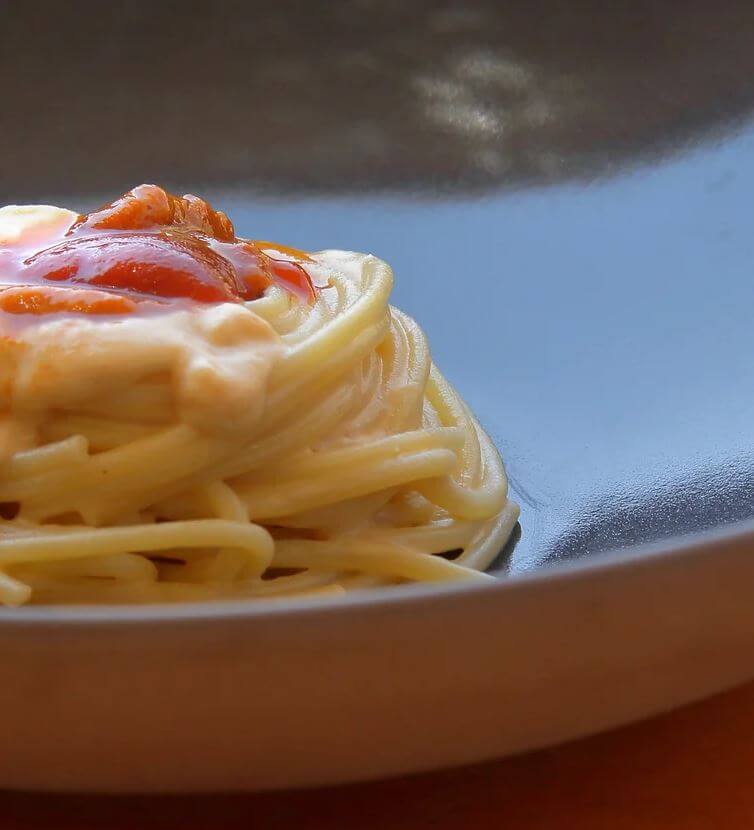
Address: Via Umberto I 21, Lecce
Le Macàre
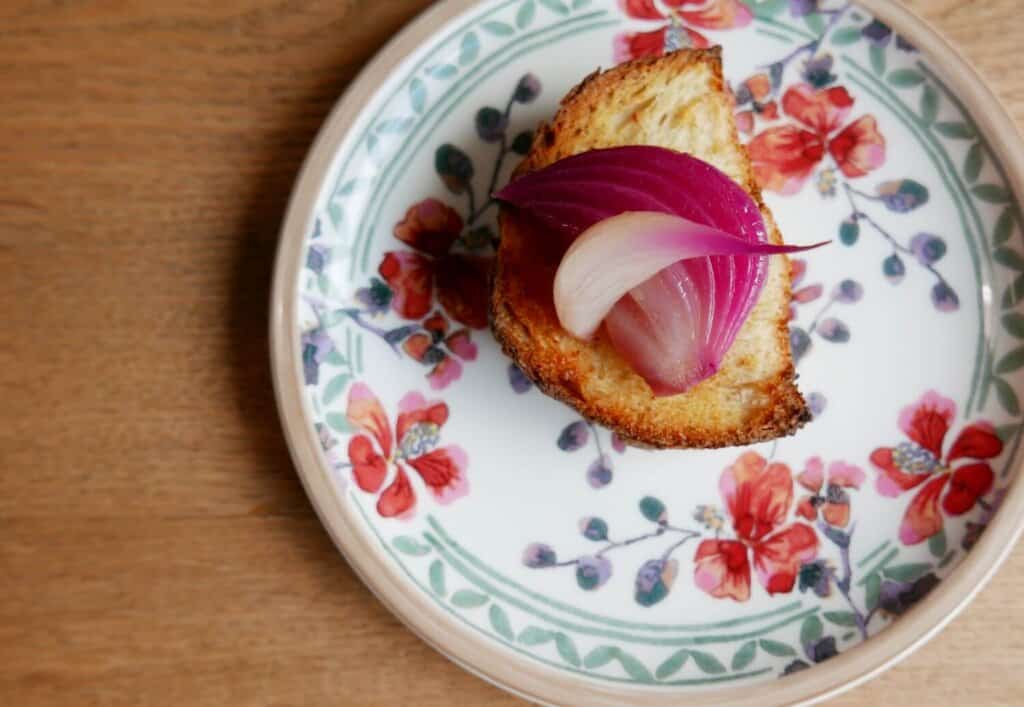
Address: Via Costadura 19, Lecce
Bros
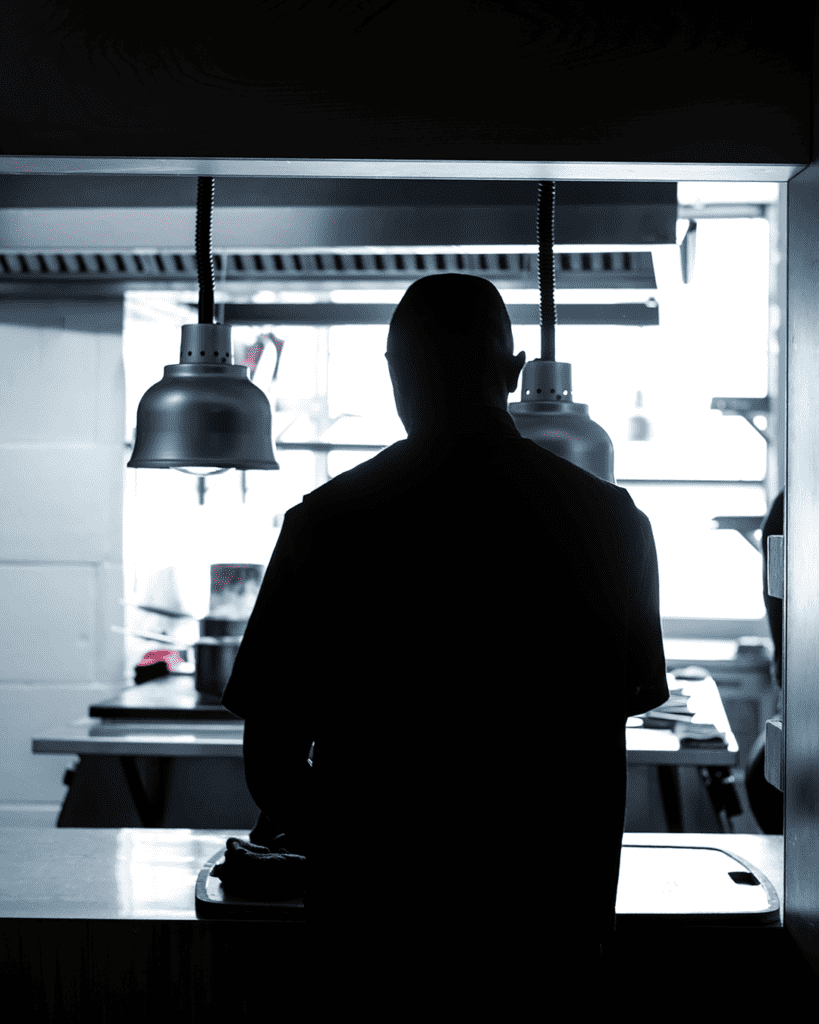
- 1 Michelin Star
Address: Via dei Templari, 21, 73100 Lecce LE, Italy
Tabisca Il Vico dei Tagliati
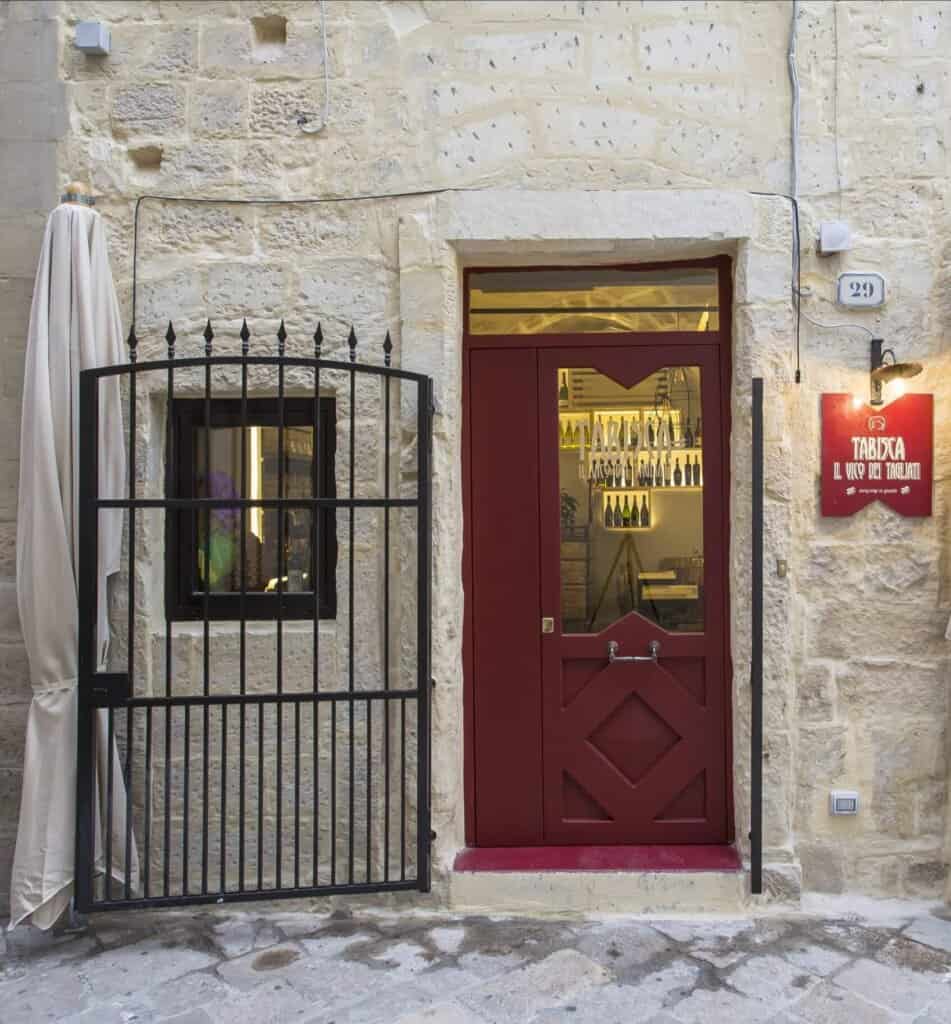
Address: Vico dei Tagliati, 3, 73100 Lecce LE, Italy
Osteria degli Spiriti
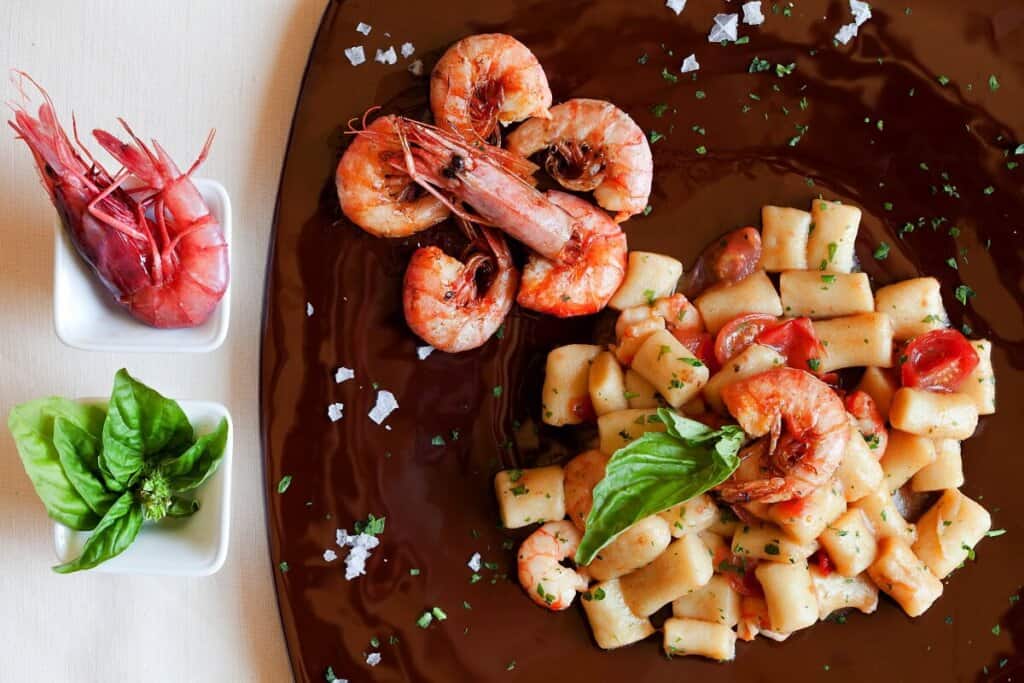
Address: Via dei Verardi, 7, 73100 Lecce LE, Italy
Primo Restaurant
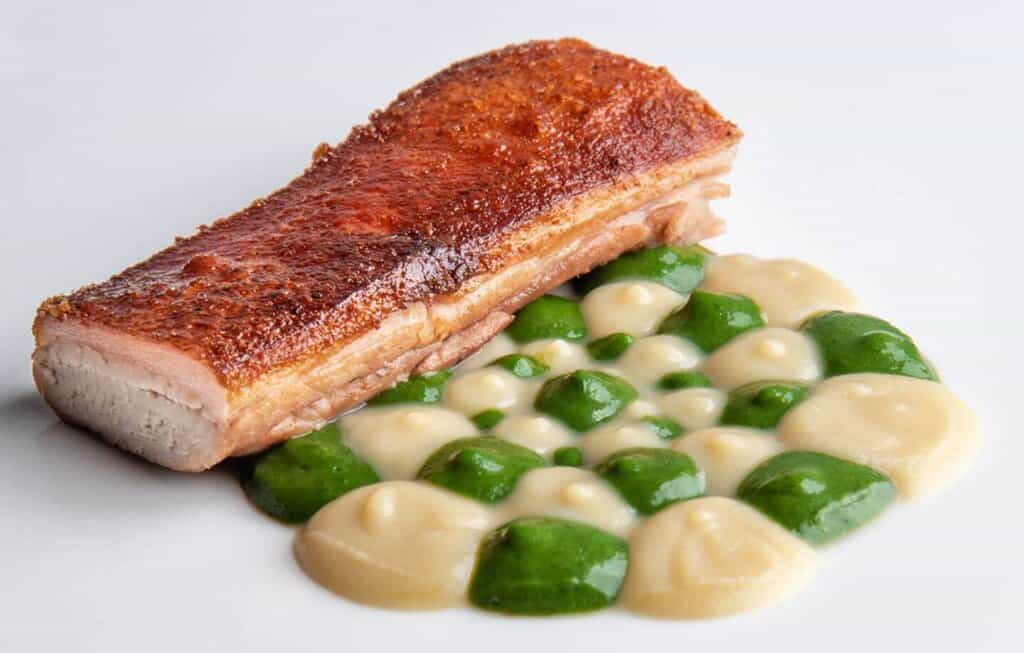
Address: Via Principi di Savoia, 34, 73100 Lecce LE, Italy
Duo Ristorante
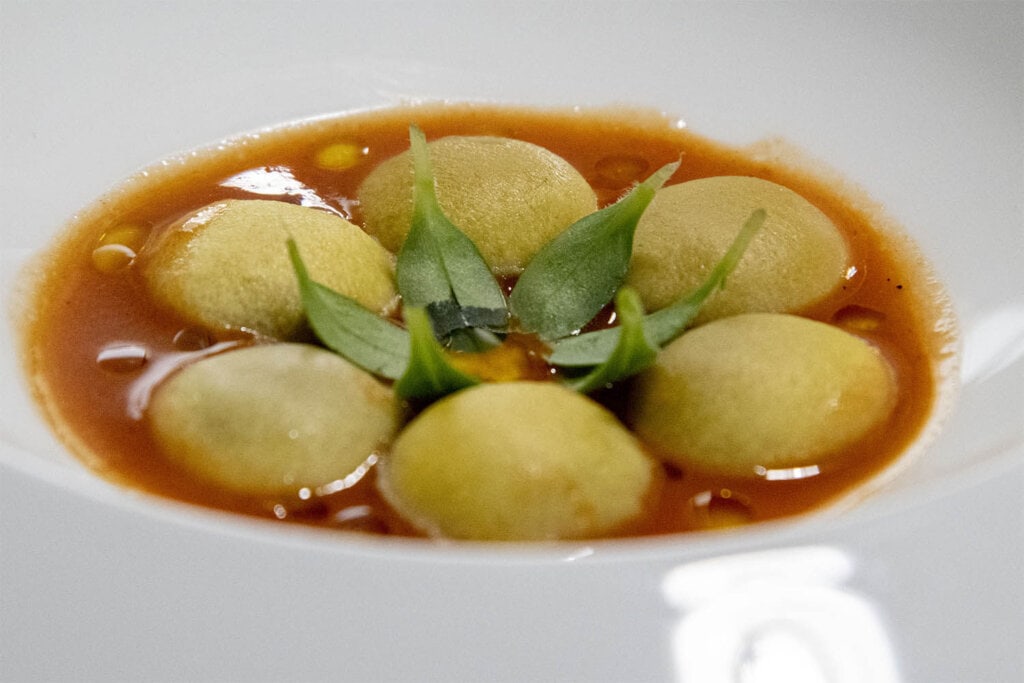
Address: Via Giuseppe Libertini, 26, 73100 Lecce LE, Italy
Gimmi Restaurant
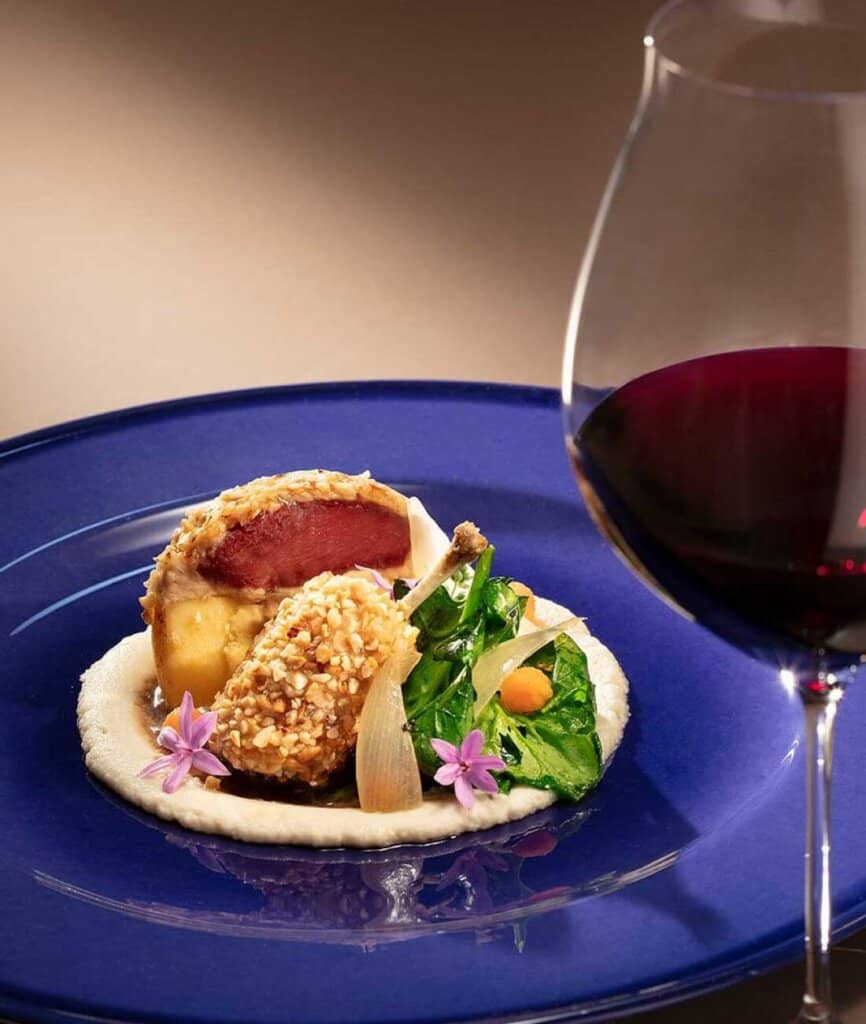
Address: Via Giuseppe Palmieri, 24, 73100 Lecce LE, Italy
Anima & Cuore
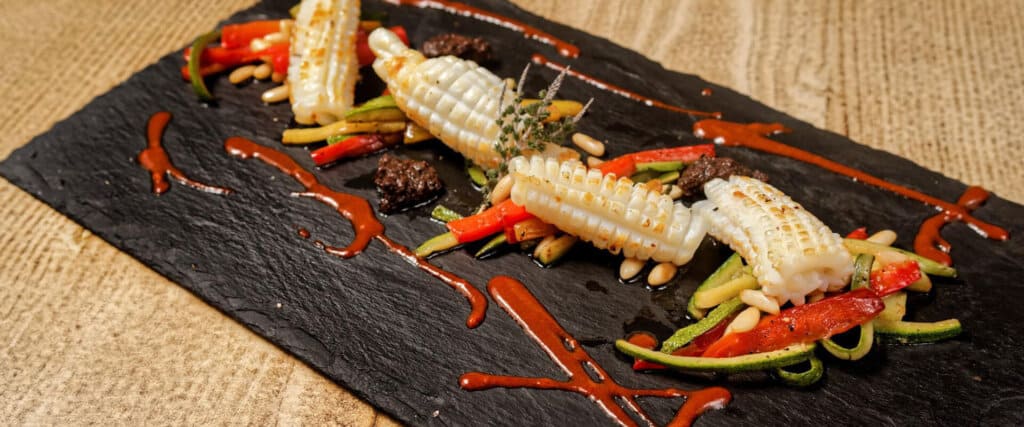
Address: Via dei Mocci, 26, 73010 Galatina LE, Italy
Dessert
This being Italy, we need to recommend at least one great Pasticceria.
In Lecce, that’s easy, it’s Pasticceria Natale. Natale is a force of nature, which is probably why Anthony Bourdain loved her. That, and her pasticciotto, a custard-filled pastry that is a specialty of Lecce.
Have a look at the video we shot with Natale, and be prepared to be hungry afterwards.
Pasticceria Natale: Via Giuseppe Garibaldi, 23, 73100 Lecce LE, Italy.
What Are the Best Luxury Hotels in Lecce?
Here are our top-rated places to stay:
1. Masseria San Domenico
A luxury 5-star masseria immersed in the Salento countryside just 15 minutes from Lecce’s historic center. This 15th century farmhouse has been beautifully converted into a resort.
● Elegant rooms decorated in traditional design with modern amenities
● Lovely manicured gardens and large outdoor pool
● Award-winning Thalassa Sea & Spa equipped with Turkish bath, sauna and indoor pool
● Restaurant serving sophisticated Mediterranean cuisine with products from masseria’s garden
● Located only 500 meters from a beautiful beach on the Adriatic Sea
● Offers activities like sailing, windsurfing and scuba diving
● Produces olive oil and vegetables on site for the restaurant
2. Risorgimento Resort
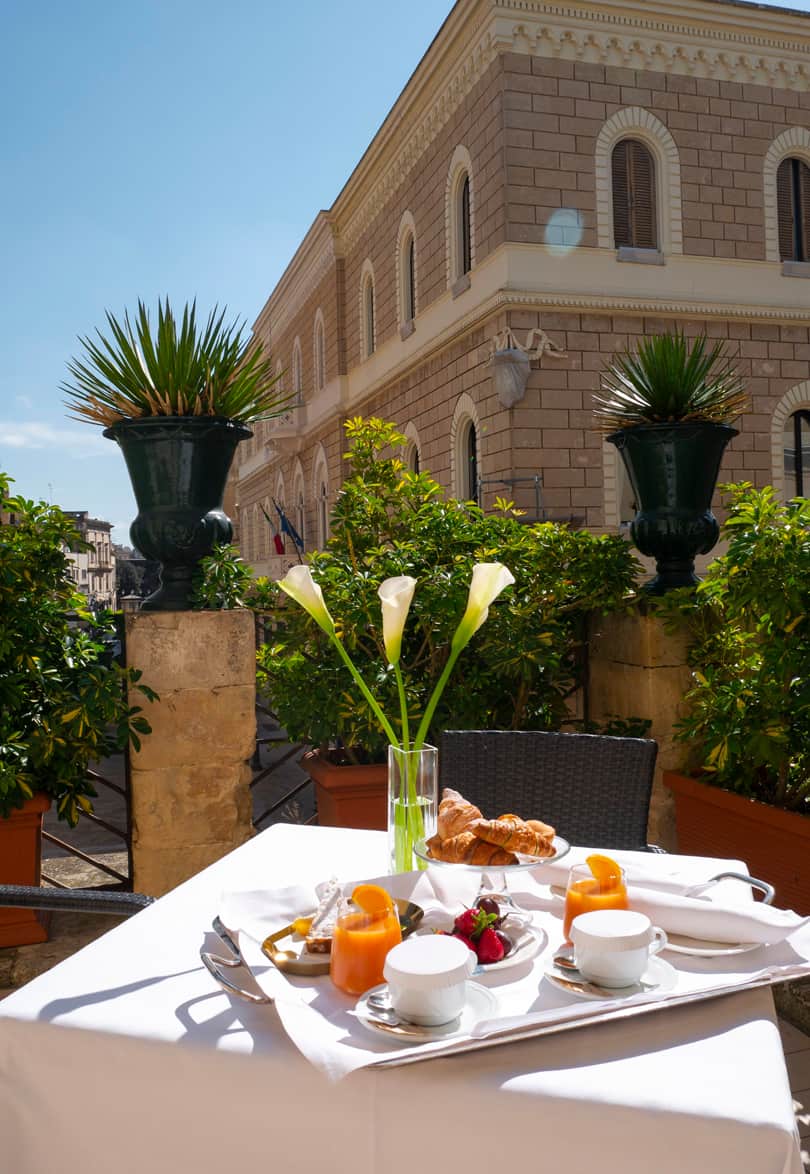
A 5-star boutique hotel located in the heart of Lecce’s historic city center. This elegant hotel combines traditional Leccese architecture and modern comforts.
● Completely renovated historic palazzo originally built in the 1800s
● Luxurious rooms and suites featuring unique decorative details
● Award-winning gourmet restaurant, Le Carrubbe, specializing in Salento cuisine
● Full-service spa and indoor swimming pool
● Central location steps away from Piazza Sant’Oronzo
● Official website: Risorgimento Resort
3. La Fiermontina Urban Resort
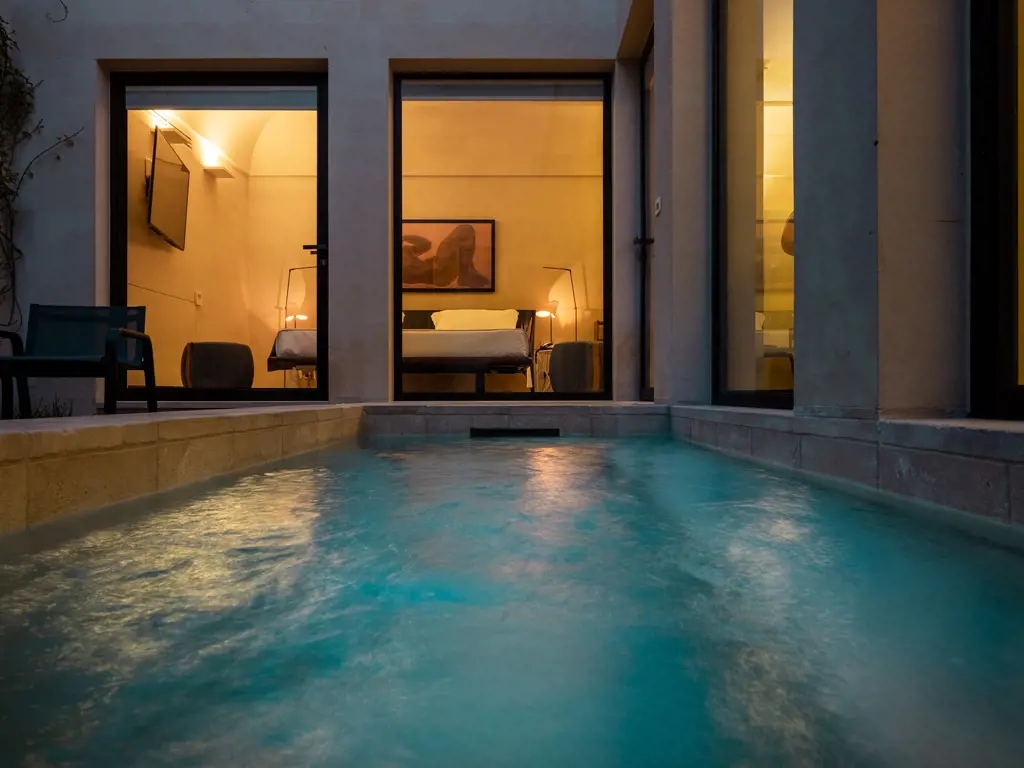
This 5-star resort is situated on a vast private park filled with olive groves just outside Lecce. It blends Salento tradition with contemporary style and comfort.
● Elegant rooms with views of the swimming pool or olive groves
● Outdoor pool surrounded by gardens and 3 on-site restaurants
● Wellness center offering a wide range of health and beauty treatments
● Overlooks the Ionian Sea which is just 1 km away
● Official website: La Fiermontina Urban Resort
4. Masseria Montelauro

A restored farmhouse from the 17th century transformed into a charming luxury retreat outside Lecce. This masseria sits amidst tranquil olive groves.
● Beautifully appointed rooms and suites with original stonewalls and wood-beam ceilings
● Lovely gardens, large outdoor swimming pool, and poolside bar
● Gourmet restaurant using fresh local produce and olive oil from the masseria’s own trees
● Produces olive oil from trees on the property used in resort’s gourmet restaurant
What are the Best Wineries in and Near Lecce?
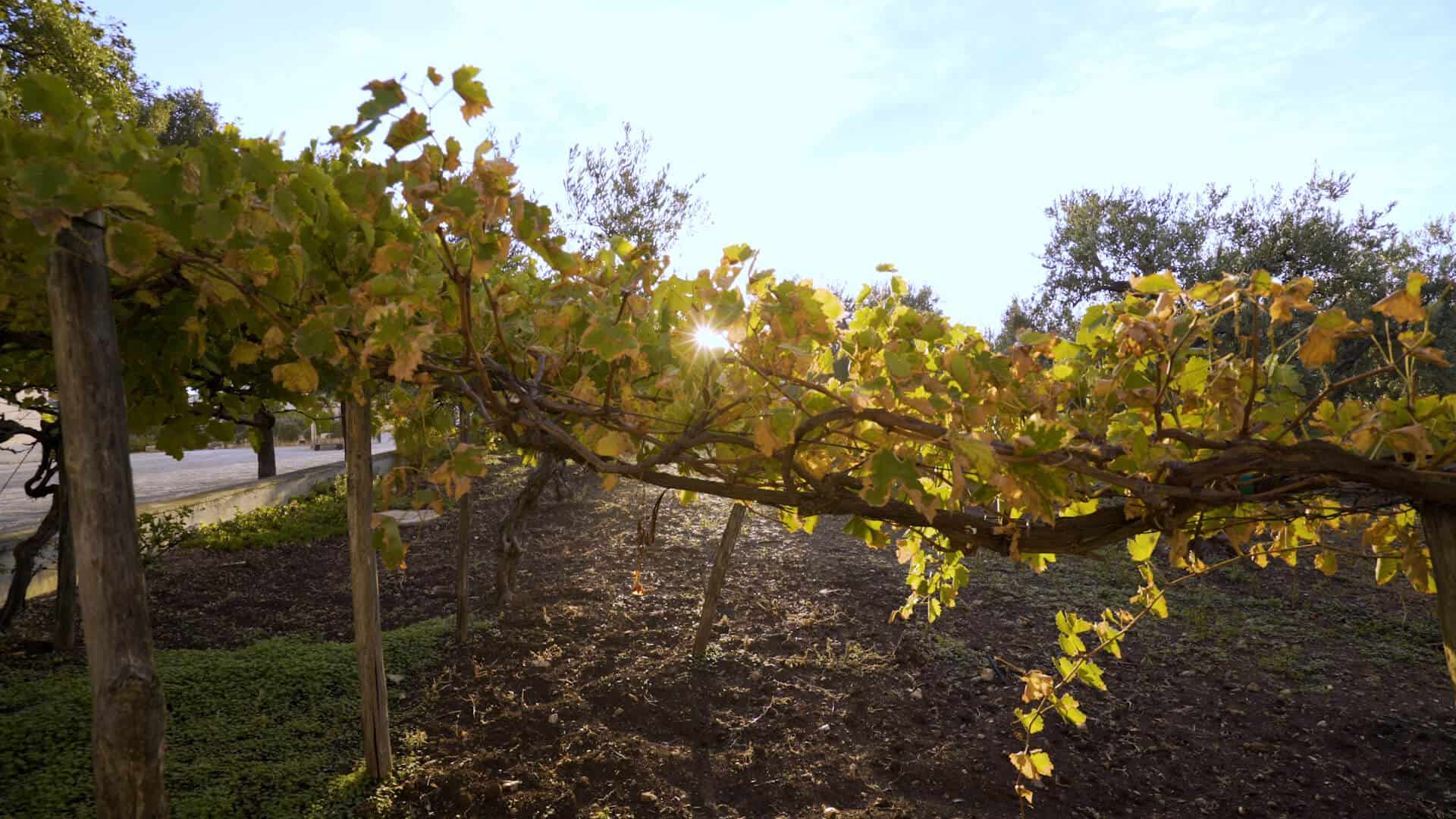
The Provence of Lecce is known and respected for its wine.
The Salento region produces some of Italy’s best wines, including Negroamaro, Primitivo, and Malvasia Nera di Lecce. Here are some of the top wineries in and near Lecce.
Leone de Castris
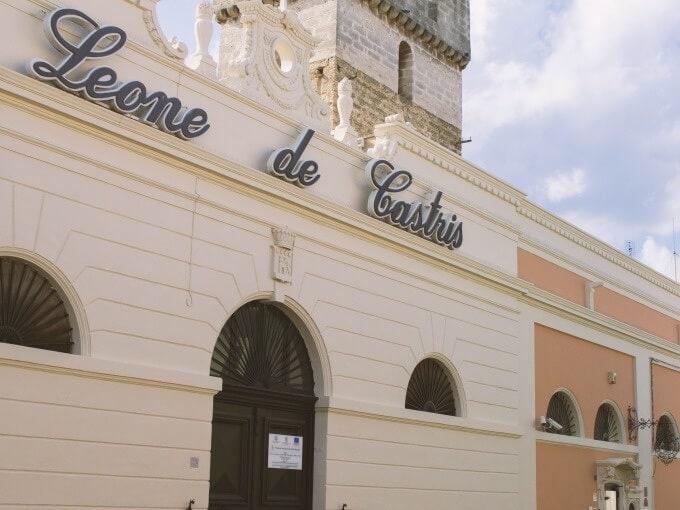
This winery is located in Salice Salentino, about 30 kilometers from Lecce. It is one of the oldest and most prestigious wineries in Puglia. Leone de Castris produces a variety of wines, including Primitivo, Negroamaro, and Malvasia Nera di Lecce.
Via San Vito, 31, 72021 Salice Salentino LE, Italy
Feudi Di Guagnano
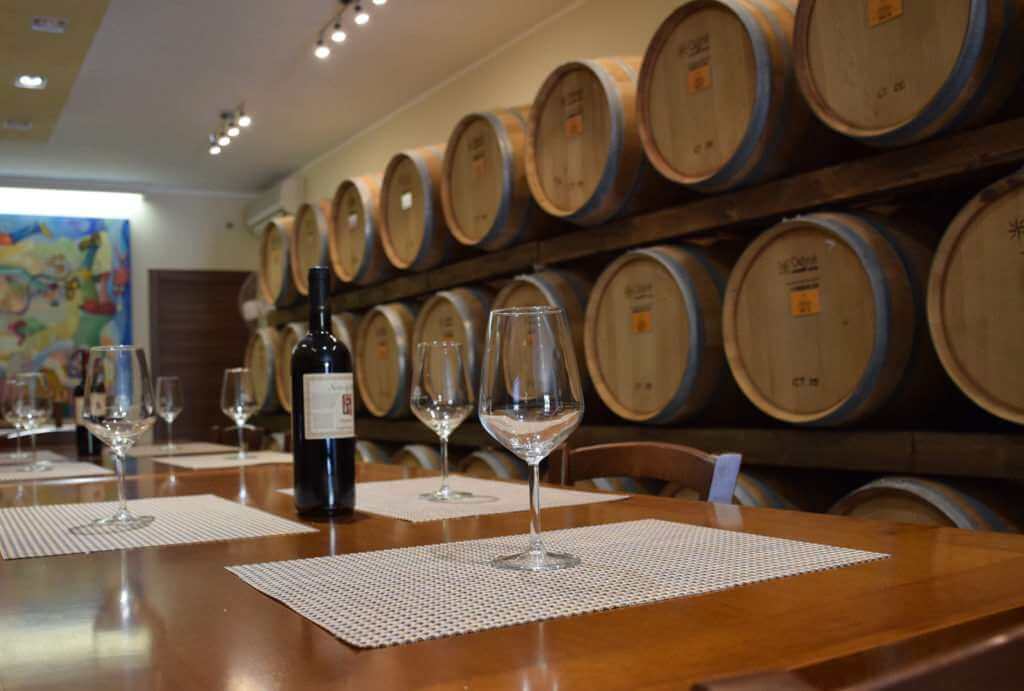
This winery is located in Guagnano, about 20 kilometers from Lecce. It is known for its production of Primitivo wines. Feudi Di Guagnano offers tours and tastings of its wines.
Via per San Vito, 72016 Guagnano LE, Italy
Cantina Vecchia Torre
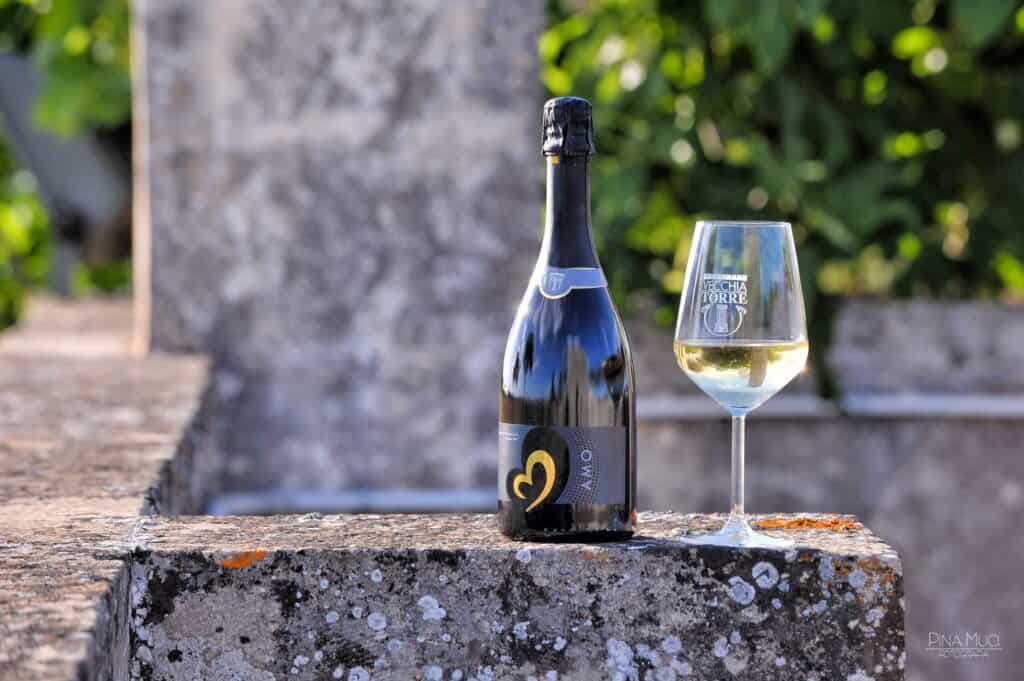
This winery is located in Leverano, about 15 kilometers from Lecce. It is known for its production of Negroamaro wines. Cantina Vecchia Torre offers tours and tastings of its wines.
Via per Copertino, 73045 Leverano LE, Italy
Cantele
This winery is located in Torricella, about 25 kilometers from Lecce. It is known for its production of Primitivo and Negroamaro wines. Cantele offers tours and tastings of its wines.
Via Alberone, 72069 Torricella LE, Italy
Cantina Petrelli
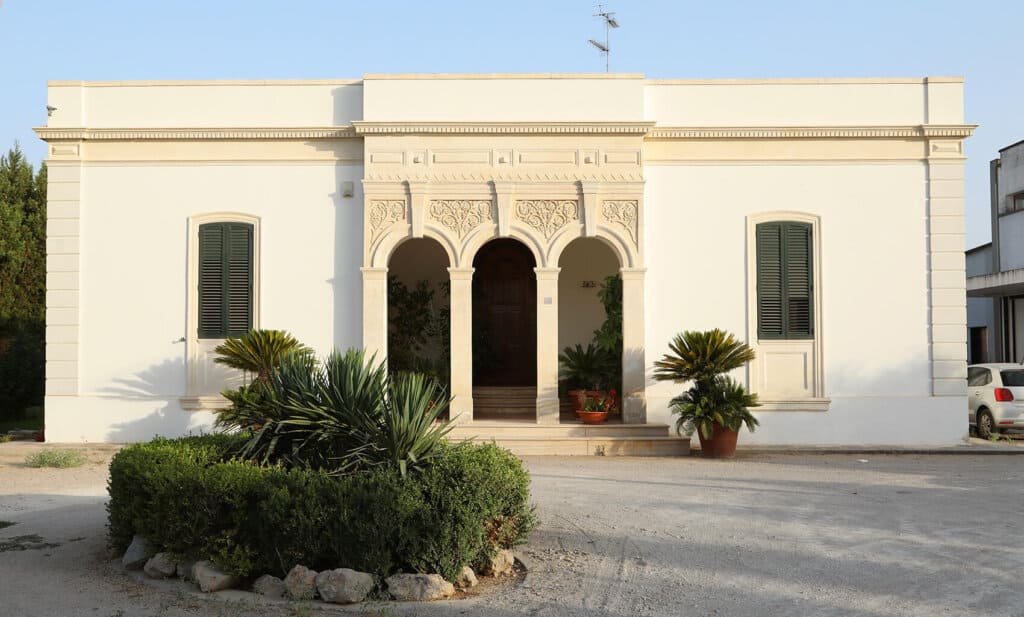
This winery is located in Copertino, about 10 kilometers from Lecce. It is known for its production of Primitivo and Negroamaro wines. Cantina Petrelli offers tours and tastings of its wines.
Via per Leverano, 73043 Copertino LE, Italy
What Are Lecce’s Best Cooking Classes?

Cooking classes are a staple of Italian travel. Lecce excels in this category, offering many excellent small-class and individual experiences that are well worth adding to your itinerary.
Below are some of the best cooking classes in Lecce, Italy.
Cook In Puglia
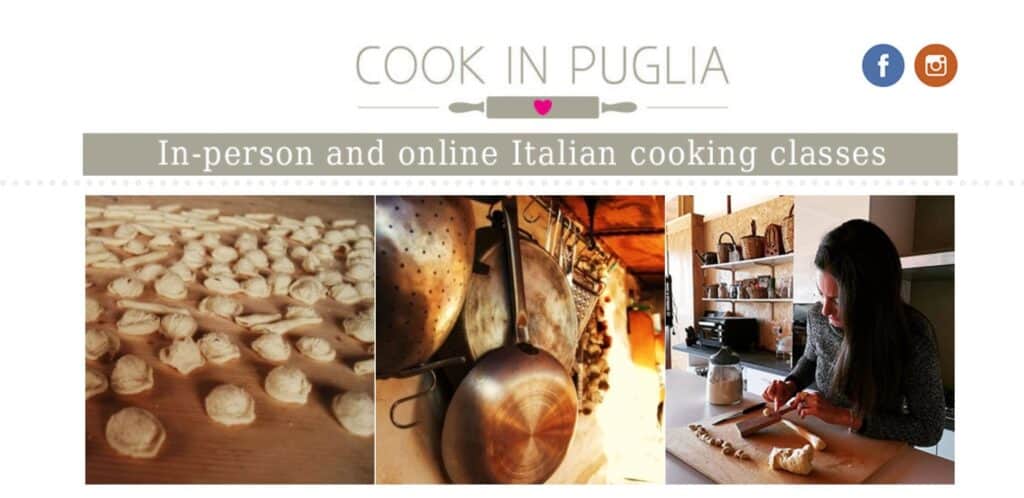
These are generally small-group classes. Cook in Puglia also offers a wide variety of regional cooking experiences.
The class is taught just ten minutes outside of Lecce, in a gorgeous countryside setting.
For those who can’t make it to Lecce or wish to continue learning after returning home, Cook in Puglia offers online classes.
Cooking Experience Cooking Classes
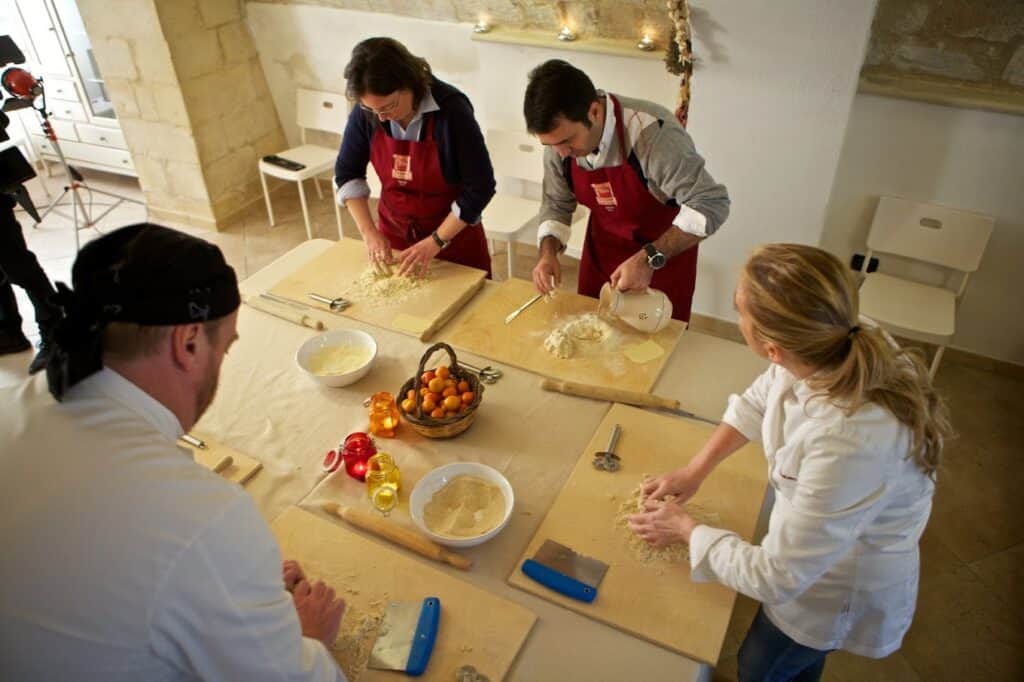
This cooking school offers a variety of cooking classes, including pasta-making classes, pizza-making classes, and traditional Puglian cuisine classes.
The school’s classes are taught by experienced chefs and they are suitable for all skill levels.
The school offers private cooking classes for individuals or groups.
The Awaiting Table Cookery School
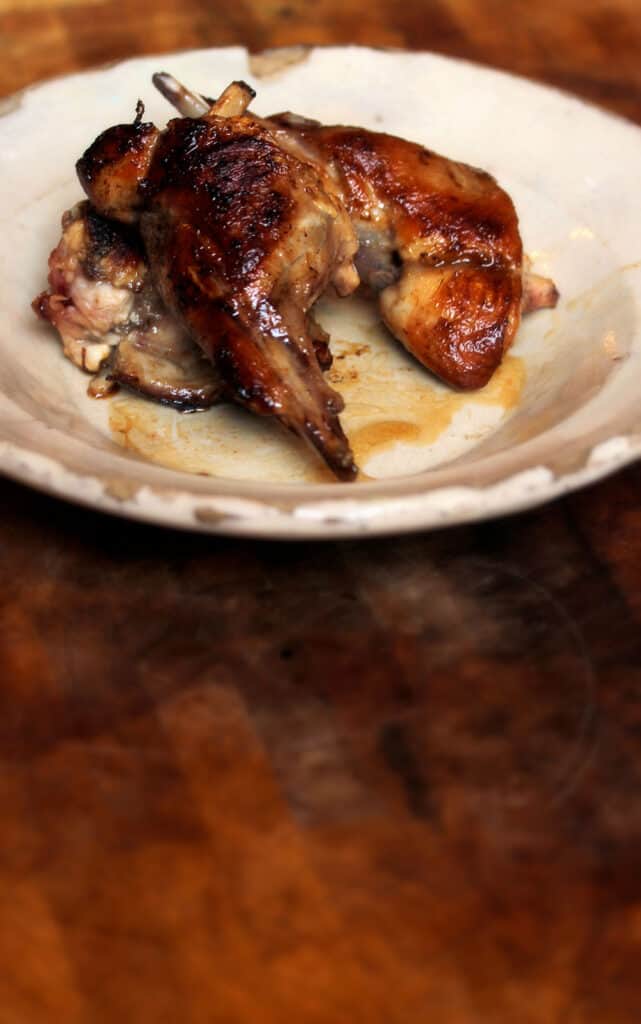
This cooking school offers a variety of cooking classes, including pasta-making classes, bread-making classes, and traditional Puglian cuisine classes.
The school’s classes are taught by experienced chefs and they are suitable for all skill levels.
The Awaiting Table Cookery School focuses on teaching students about the history and culture of Puglian cuisine.
Foodie House Home Restaurant Cooking Class with Livio
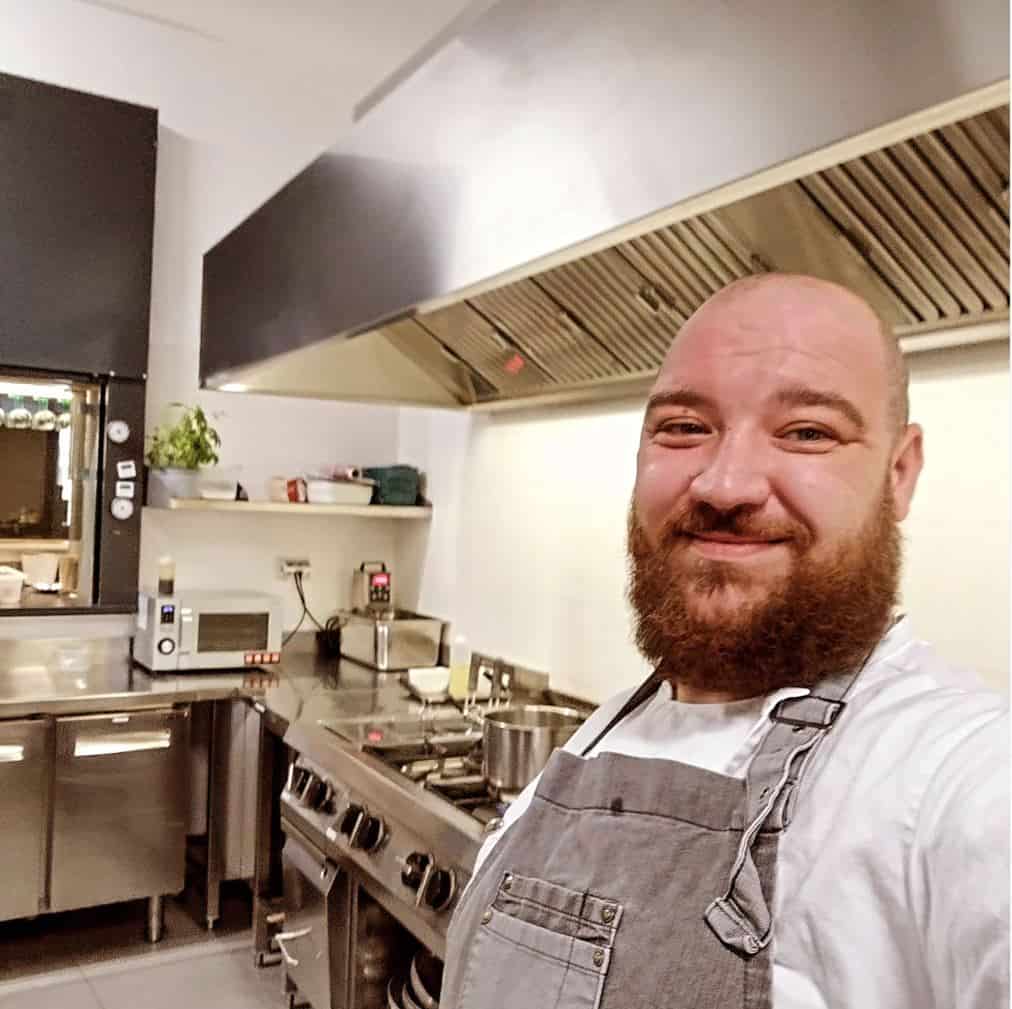
This cooking class is taught by Livio, a local chef.
The class is taught in Livio’s home and it covers the basics of Puglian cuisine.
The class is limited to a few students and it is taught in a relaxed and friendly atmosphere.
Cesarine Lecce
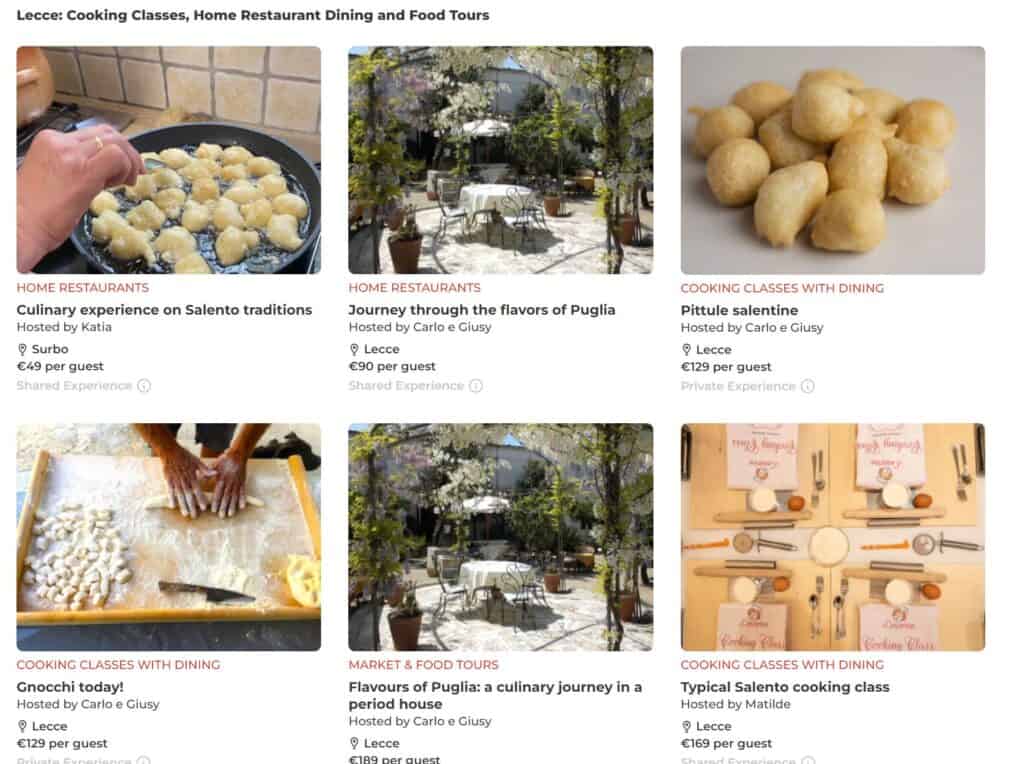
This cooking school offers a wide variety of cooking classes in the Lecce area, including pasta-making classes, pizza-making classes, and traditional Puglian cuisine classes.
The school’s classes are taught by experienced chefs and they are suitable for all skill levels.
What makes Cesarine Lecce unique is that the classes are taught in the homes of local residents, giving students a unique opportunity to learn about Puglian culture and cuisine from a local perspective.
What Destinations Near Lecce Should I Visit?
Lecce is ideally situated near some of Southern Italy’s most beautiful cities. The top destinations to visit near Lecce are:
● Otranto
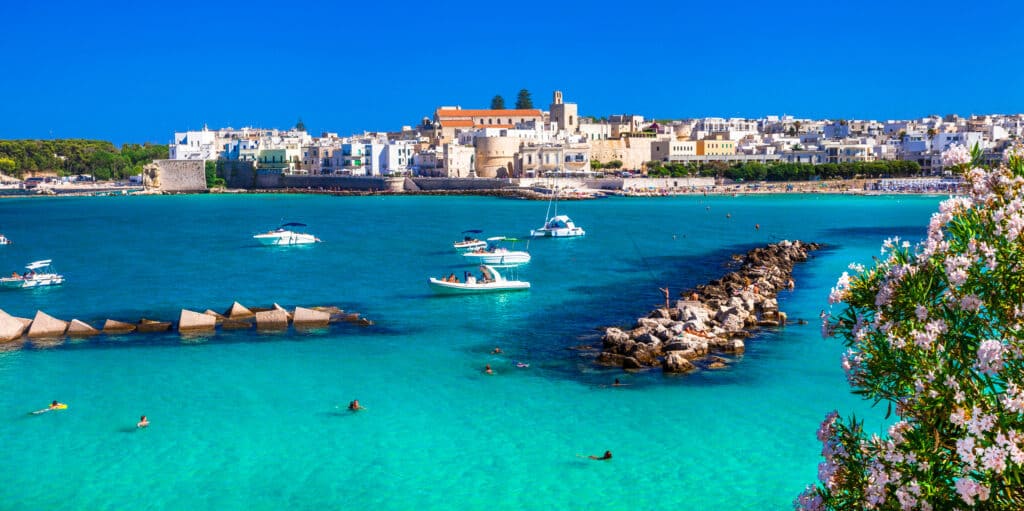
● Gallipoli
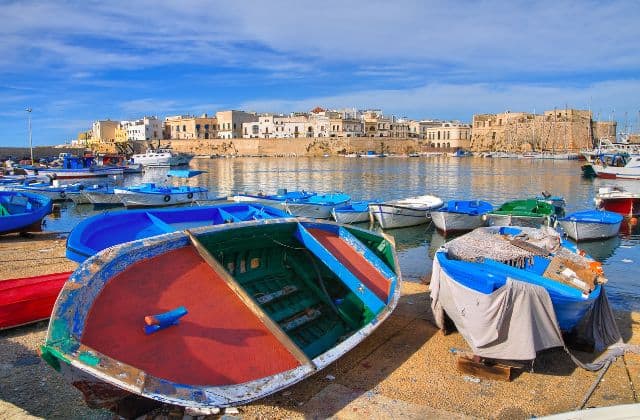
● Alberobello
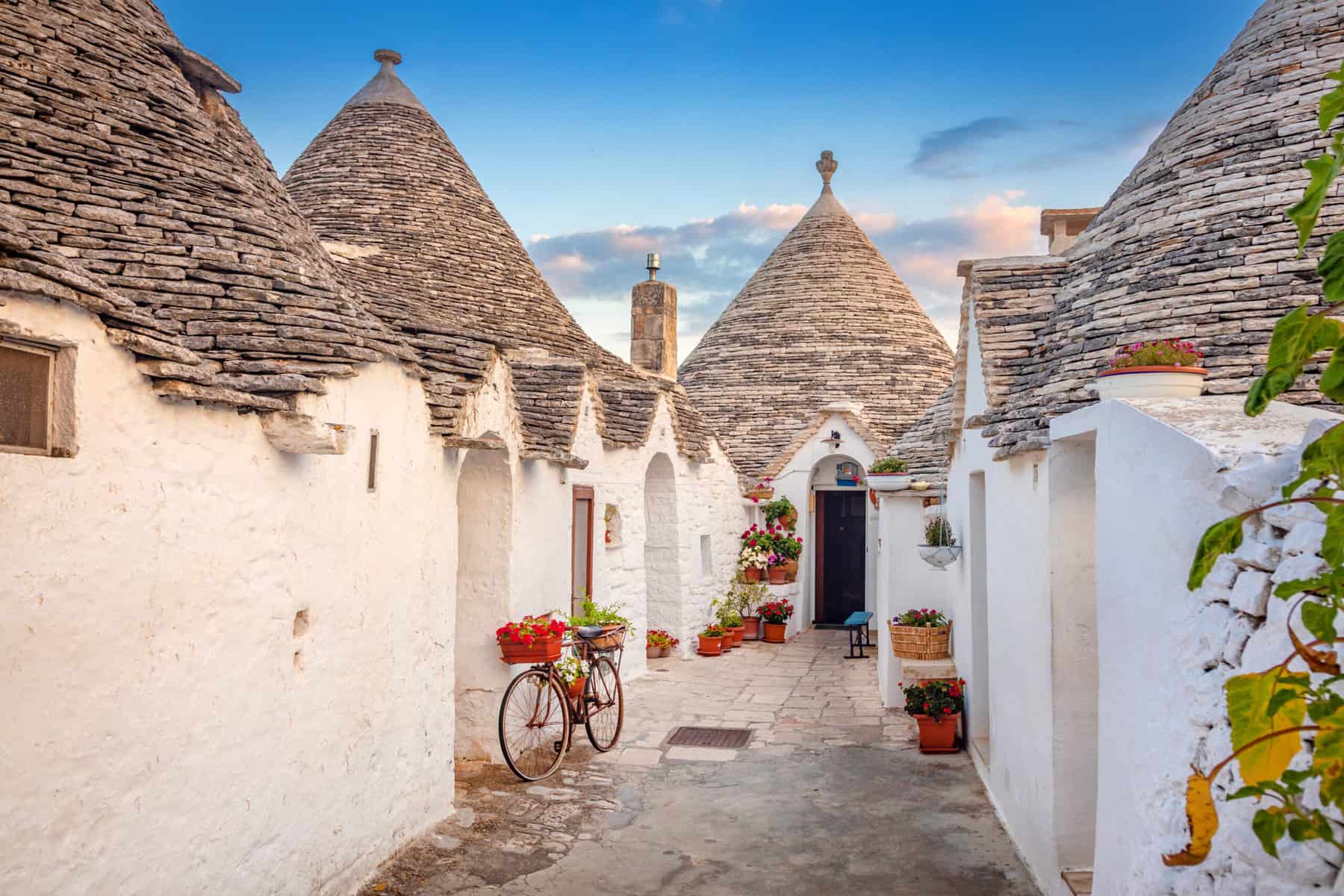
● Polignano a Mare
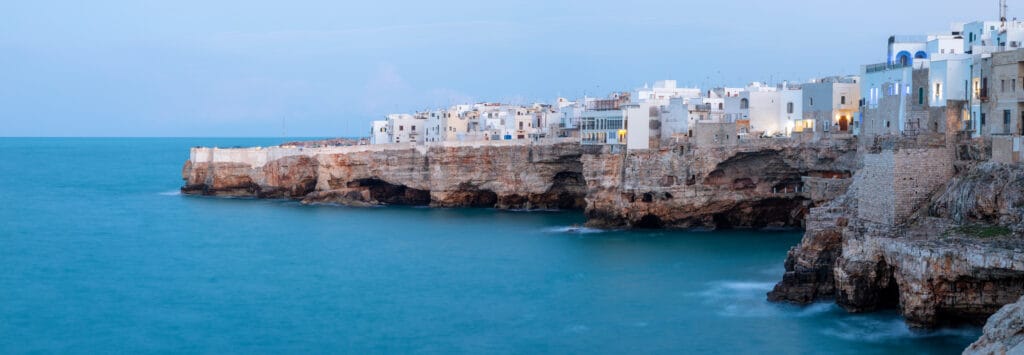
● Brindisi

● Martina Franca
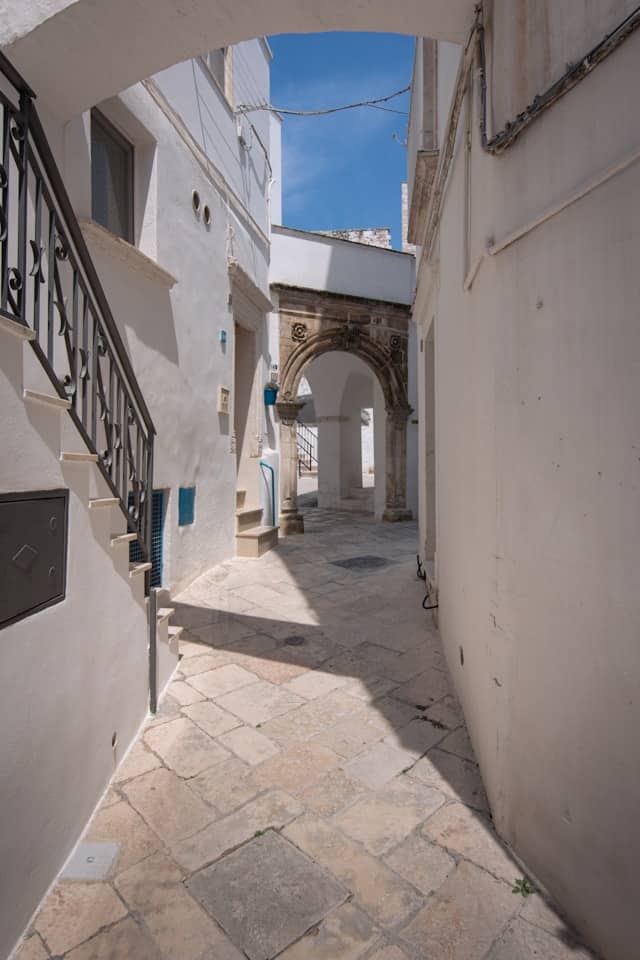
● Galatina
